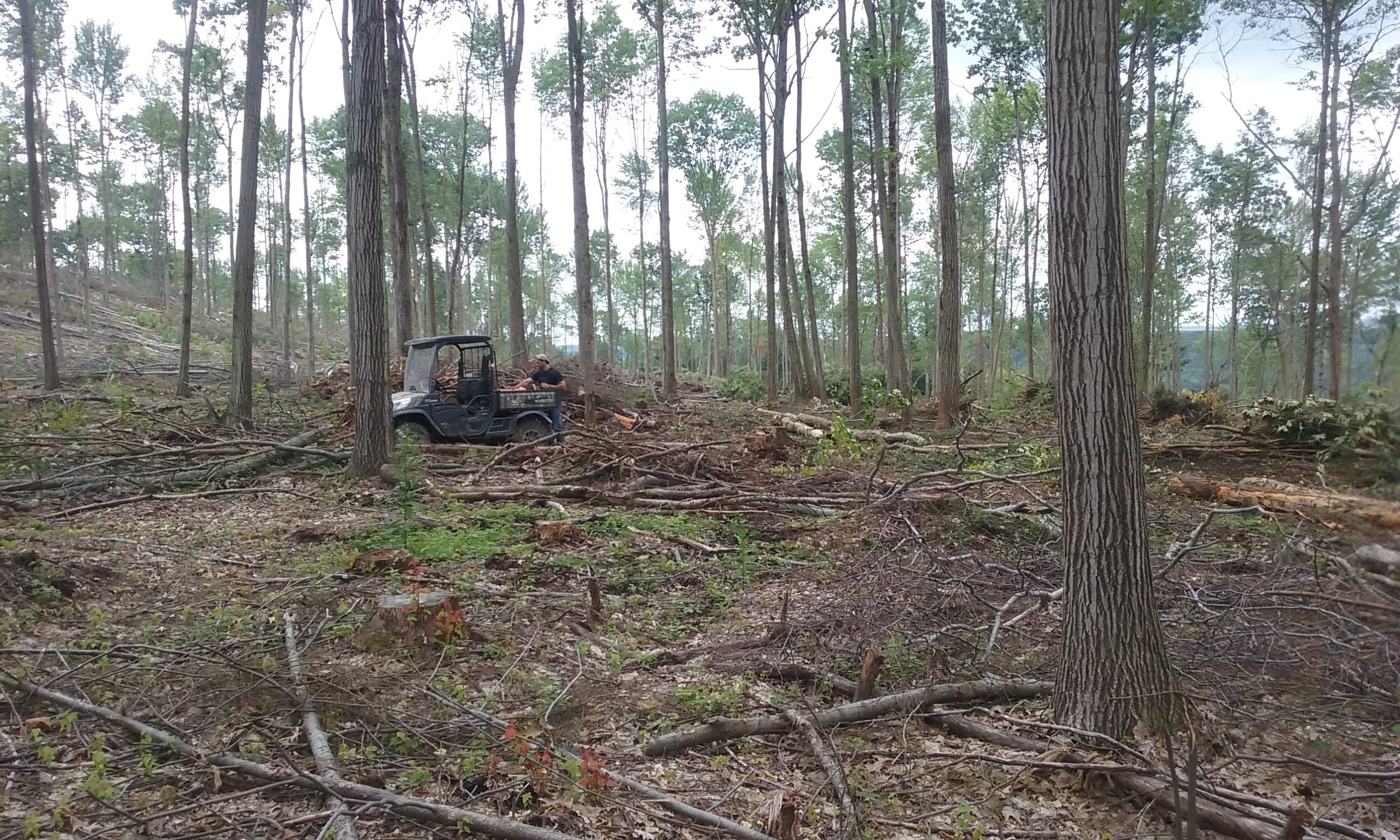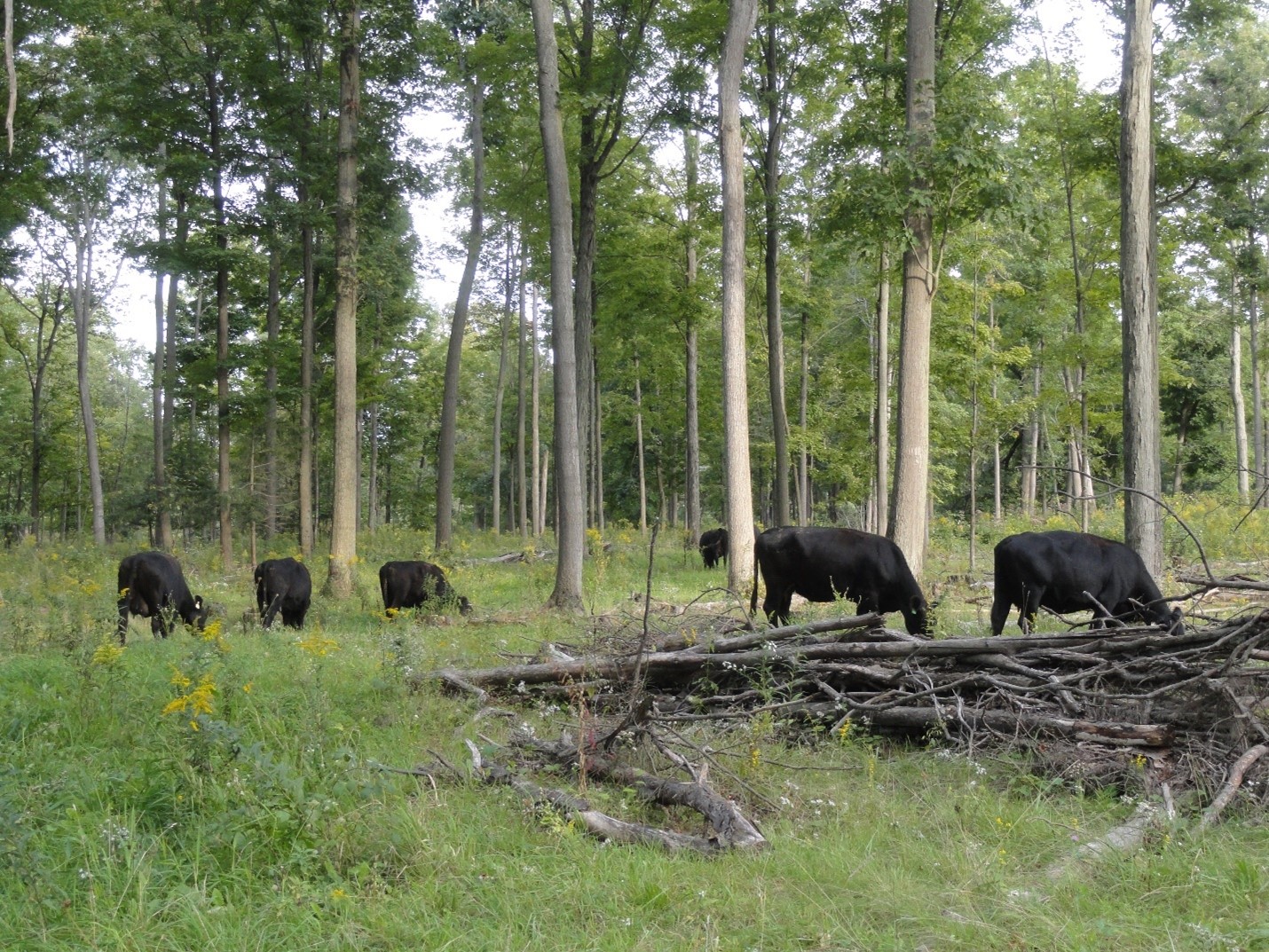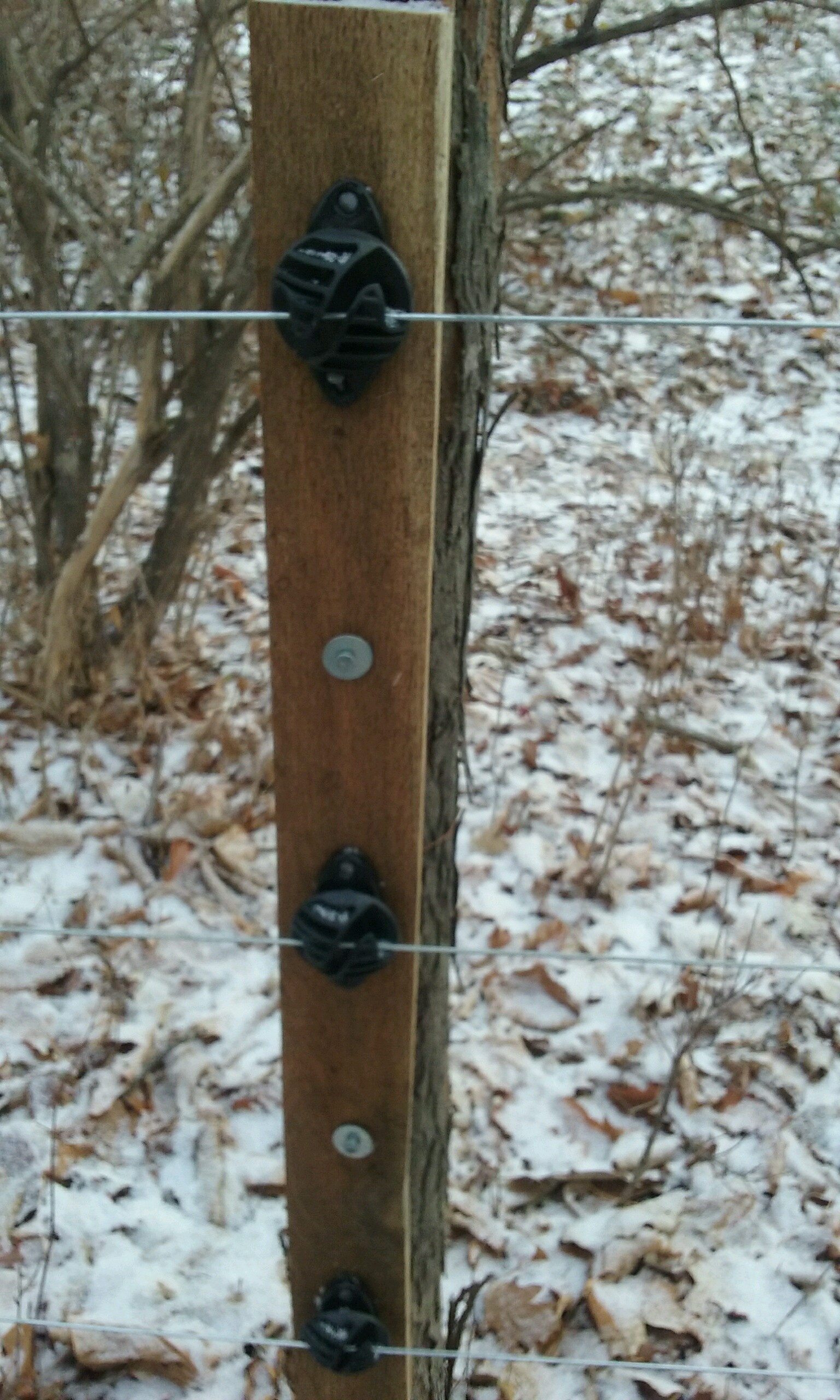Silvopasture for Ontario
Learn about the use of silvopasture as a form of integration of woodlands, forage and livestock through grazing. This information is for Ontario livestock producers.
ISSN 1198-712X, Published December 2023
Introduction to silvopasture
Agroforestry is a form of agriculture that promotes using forested land for economic gain through agriculture, while ensuring proper land stewardship. Silvopasture is an agroforestry practice or system that allows for the integration of woodlands, forage and livestock through grazing. The term incorporates the Latin root “silva” or “sylva,” meaning wood or forest. Silvopasture has the potential to increase water retention for the forages in the system and provide shaded areas for the forage and livestock in it. Additionally, silvopasture has been used to increase carbon sequestration in the soil and vegetation in the system. Silvopasture requires intensive management to allow for favourable tree and forage growth while also optimizing grazing for livestock. Silvopasture is more than just livestock grazing wooded areas; the livestock need to be moved frequently to ensure adequate rest and recovery for both optimal forest growth and adequate forage for the animals.
History of agroforestry in southern Ontario
Archeologists have determined that most of Southern Ontario was previously forested, and some of this land may have been used for timber production. It has been determined that as early as the tenth century, maize was being cultivated in this area, along with sunflowers and squash, suggesting that agroforestry management strategies were used by First Nations and Indigenous communities prior to the modern use of the terminology (Figure 1). Silvopasture approaches were likely used to maintain hunting grounds, as savannah-type farming is not new and expresses a history that honours the landscape and our forebearers. By contrast, the complete clearing of land has been the default practice since European people started taking ownership of land in North America. This was done to make room for agricultural production, and the construction of housing and infrastructure to further profit from the land and forest products.

Source: Brett Chedzoy.
Modern silvopasture
Silvopasture is a common practice throughout Europe and is used in both the southeastern and northeastern U.S. In recent years, most South and Central American countries have adopted this practice, with producers in these areas realizing its benefits and opting for this over the removal of all trees for open pastures. Silvopasture is not very common in Ontario, but its adoption could provide opportunities in the coming years with hotter summers expected and less area available for grazing.
Management is key to silvopasture systems
“Bush pasture” has justifiably been perceived as a negative practice in the past, as it involved sacrificing naturally wooded areas for grazing, with little to no management of livestock and the land. This resulted in increased soil erosion and compaction as well as tree damage, leaving the forested area with no regrowth. When adopting silvopasture today, intensive management strategies for grazing should be practised, to ensure reduced soil erosion and compaction. With “intensive management,” the animals are rotated regularly and the forage biomass evaluated prior to and after grazing access.
With increased use of silvopasture, soil carbon sequestration can be enhanced and marginal land that normally would be unused can be used more productively and profitably. When Thevathasan et al. (2012) compared a silvopasture system to a monoculture pasture system, the silvopasture system sequestered 2.7–3 times more carbon. This is a beneficial way to use a forested area while maximizing carbon sequestration and edible protein production. Project Drawdown’s inclusion of silvopasture systems demonstrates the potential for improved climate outcomes.
Considerations for adopting a silvopasture system
Weather and season are 2 important aspects that need to be considered when utilizing a silvopasture system. Silvopastures are most productive during the growing season in spring, summer and fall. They allow livestock to escape the heat and sun by offering shaded grazing in wooded areas. Silvopasture systems can be very beneficial for times when forage availability is low, such as the “summer slump” and periods of very dry conditions. Some producers choose to use them for livestock in the winter as a barrier to the weather. Trees are most sensitive to damage from livestock under muddy conditions in late fall (November, December) and early spring (March, April). Consequently, the livestock is often kept away from the area during that period to avoid excessive damage to tree roots. As such, the farm’s grazing plan and options must be flexible to prevent tree damage.
A silvopasture system must be properly managed for it to be successful. With proper grazing rotations and caring for both the plants and livestock (rather than prioritizing one at the expense of the other), the system will be able to thrive. Utilizing best practices pertaining to the selection of livestock type, grazing techniques, tree density and maintaining forage quality will also increase the likelihood of success. Farmers should seek input from advisors such as foresters to help design a profitable silvopasture system.
The site
There are many conditions to evaluate before using a specific wooded area as part of a silvopasture system. Secure fencing and water are 2 important factors. The area must also be able to produce enough forage to feed the number of animals in the system. Access to this area should be relatively easy for the producer and service providers.
Although shade is one of the benefits to having a silvopasture operation, having a sufficient amount of sunlight for the forage is necessary. For this reason, trees should be spread out and uniformly distributed to allow for shade with adequate sunlight for the forage. A good starting point for Ontario silvopasture is to have about 63–125 large trees/hectare (25–50/acre) (Figure 2). The trees should be well suited for the site and meet management objectives. The trees must also be maintained by trimming or removing branches and removing and replacing dead trees.

Source: Brett Chedzoy.
Species of trees and forages
Tree species
Native species of trees and forages are preferred, although some non-native tree species may work in new plantation silvopastures so long as they are properly managed under the expertise of a person with forestry training, to ensure diversity of tree and forage species throughout the area. It is important to confirm that the variety of tree planted does not produce leaves that are poisonous to livestock. Some examples of tree species that can be used in Ontario are listed in this fact sheet.
Native tree species for consideration in Ontario silvopasture systems includes:
- silver maple
- white ash
- black walnut
- red oak
- white cedar
Native and non-native species for consideration in Ontario silvopasture systems includes:
- pine
- willow
Non-native species for consideration in Ontario silvopasture systems includes:
- hybrid poplar
- black locust
- hazelnut
- norway spruce
Willow species are a new consideration for silvopasture in Ontario. Some are being used as a crop due to their harvest cycle every 3 years. Conifer species (pines, spruces) within a silvopasture system can provide an increased tree density but will consequently not provide for as high a stocking density of livestock. Diversity of tree species and forage species is an important consideration in silvopasture, as diversity minimizes the risk of pests and disease.
Forages
A mixture of grasses and legume species should be used in the silvopasture, chosen according to local conditions.
Grazing tips
Rotational grazing management should be practised to allow adequate growth of the forage and to minimize damage to trees. While any livestock species could be used in this type of system, it lends itself most easily to ruminant livestock (cattle, sheep, goats) as a balance of ease of animal control and disturbance (versus poultry and pigs, respectively).
Stocking density will vary with different livestock species, but as a starting point, fewer animals should be used when first grazing a newly developed silvopasture compared to equivalent open pasture. This is to ensure forage abundance for animals and reduce risk of damage or escape.
Temporary electric fencing can be effective if moving the animals frequently to ensure forage regrowth. If using “living fenceposts,” electric fencing insulators should first be affixed to mounting strips that can be loosened off the growing trees by backing-off screws. Nailing insulators directly onto trees will require more maintenance to prevent device failure (Figure 3).

Source: Brett Chedzoy
Silvopasture for Ontario
Silvopasture has potential in Ontario to be a sustainable, profitable system with animal care, carbon sequestration and water balance benefits. Transitioning to silvopasture requires significant investment in fencing, water provision, tree establishment or removal and forage establishment. Implementation of rotational grazing systems is necessary to optimize forage utilization and animal production, and to prevent damage to soil and trees. Grazing must be responsive to weather conditions. It is critical to be able to remove animals to better grazing areas during inclement weather, to prevent damage. Silvopasture may not be the right choice where there is a good stand of high-quality trees or where changing the current livestock grazing system (continuous to rotational) on open pastures would be challenging.
References
- Chedzoy, B. (2020). Silvopasturing: A solution to some modern-day challenges for land managers. Cornell Cooperative Extension Schuyler County. (FarmSmart Agricultural Conference, Guelph, Canada.)
- Contosta, A.R., Asbjornsen, H., Orefice, J., Perry, A., and Smith, R.G. (2022). Climate consequences of temperate forest conversion to open pasture or silvopasture. Ag., Ecosys. and Enviro. 333, 107972.
- Frey, G.E., Fassola, H.E., Pachas, A.N., Colcombet, L., Lacorte, S.M., Perez, O., Renkow, M., Warren, S.T., and Cubbage, F.W. (2012). Perceptions of silvopasture systems among adopters in northeast Argentina. Agri. Sys. 105(1), 21-32.
- Gordon, A.M., Thevathasan, N.V. (2004). How much carbon is stored in Canadian agroecosystems using a silvopastoral approach? University of Guelph.
- Orefice, J., Carroll, J., Conroy, D., and Ketner L. (2017). Silvopasture practices and perspectives in the Northeastern United States. Agro. Sys. 91, 146‑160. Project Drawdown. Silvopasture.
- Thevathasan, N.V., Gordon, A.M., Bradley, R., Cogliastro, A., Folkard, P., Grant, R., Kort, J., Liggins, L., Njenga, F., Olivier, A., Pharo, C., Powell, G., Rivest, D., Schiks, T., Trotter, D., Van Rees, K., Whalen, J., and Zabek, L. (2012). Agroforestry Research and Development in Canada: The Way Forward. Advan. Agrofor. 9
- Garrett, H.E., Kerley, M.S., Ladyman, K.P., Walter, W.D., Godsey, L.D., Van Sambeek, J.W., and Brauer, D.K. (2004). Hardwood silvopasture management in North America. New Vistas Agrofor. 1, 21-33.
- Munoz, S.E., Mladenoff, D.J., Schroeder, S., Williams, J.W. Defining the spatial patterns of historical land use associated with the indigenous societies of eastern North America. J. Biogeo. 4112., 2195-2210.
This fact sheet was written by Sedley Benitz, Department of Animal Biosciences, University of Guelph, James Byrne, beef cattle specialist, Ministry of Agriculture, Food and Rural Affairs (OMAFRA), Brett Chedzoy, Cornell Cooperative Extension, Schuyler County, New York, and Christoph Wand, sustainability specialist, OMAFRA.